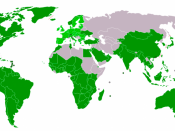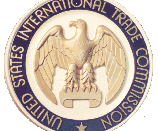AbstractInternational trade and world output are very closely intertwined. As a global market, we experience the effects of both in tandem. This paper will attempt to provide a deeper perspective of the two intertwined mechanisms, and give some explanation for the way one affects the other. In addition, it will discuss the broad patter of international trade; and explore the possibilities of living without imported products we take for granted everyday.
The amount of world output in one year invariably affects the amount of international trade for that year. In times of economic boom, world output increases, thereby increasing the amount of international trade. By contrast, an economic recession significantly reduces international trade. In these times, consumers are unsure about their financial future, which leads to the buying of fewer imported and domestic products. This, in turn reduces the amount of production output in some countries. Another reason trade and world output are so closely related is because a country in recession often experiences a significant reduction in the value of their currency.
This in turn leads to higher prices on imported products, making domestic products more affordable (Wild, Wild, Han, 2006). World trade has more than tripled while world output has 'only' doubled. The rise in trade relative to output is common across countries and regions, although the relative growth in trade and output varies greatly. This is due to the fact that traded goods have become less expensive than those which are not traded (wto.org, 2007).
International trade is the exchange of goods and services across international boundaries or territories. In most countries, it represents a significant share of GDP. According to Wild, Wild, and Han, trade between countries with higher income economies account for approximately 60% of the world's merchandise trade. Trade between high, low and...


